Air, Architecture + Other Climates
[57.0°to 71.0° N : Norway] - 2019/20
John Cook, Ben Pollock + Laura Nica
︎︎︎ Home
︎︎︎ Previous // Next ︎︎︎
Gaby Bucknall

Moth Assembly and Reforestation Forum
Finnmark(Lapland Border), Norway
The project scenario is centred on the critically endangered birch forests of northern Norway, recently affected by instances of ‘invasive’ moth species. Triggered by human-induced climate change, these territorial transformations affect the phenology of moths and birch trees alike. Moth larvae and adults are dispersed through native birch forests by wind. The moths consume birch leaves, ultimately destroying the forest, leading to their perish.
Typically considered a ‘pest’, these non-human agents overcome various human efforts to eradicate them through evasion and adaptation. However, this project challenges this stance, given that this insect migration is ultimately the result of humans, and that moth’s behaviour is merely a natural response to this. The project imagines an alternative - a re-distribution of environmental risks and benefits which balances the needs of humans, trees and moths, passively promoting the ultimate recovery of the forest ecosystem.
The project is redefining a new pattern of coexistence, allowing visitors to engage with the damaged forest, its regrowth and the moth’s life-cycle. The masterplan challenges the lines of territory between various architectural interventions and their local ecosystems, through a Reforestation Hiking Route. The route provides a journey to witness, experience and learn about these entangled, dependent, multi-species stakeholders and their lifecycles. The main intervention - the Moth Assembly celebrates the seasonality of the forest through principles of birth, death and regrowth, by replenishing the architecture. Timber from the dying forest is used as the main construction material, whilst scavenged leaves and twigs are woven into the frame throughout the year, creating a layered framework to attract the moths. Thus, the architecture becomes part of the forest, and is renewed with the forest over time. The central space itself grows and decays through the seasons, harbouring life and forming a place to evolve strategies for saving the forest for future generations.
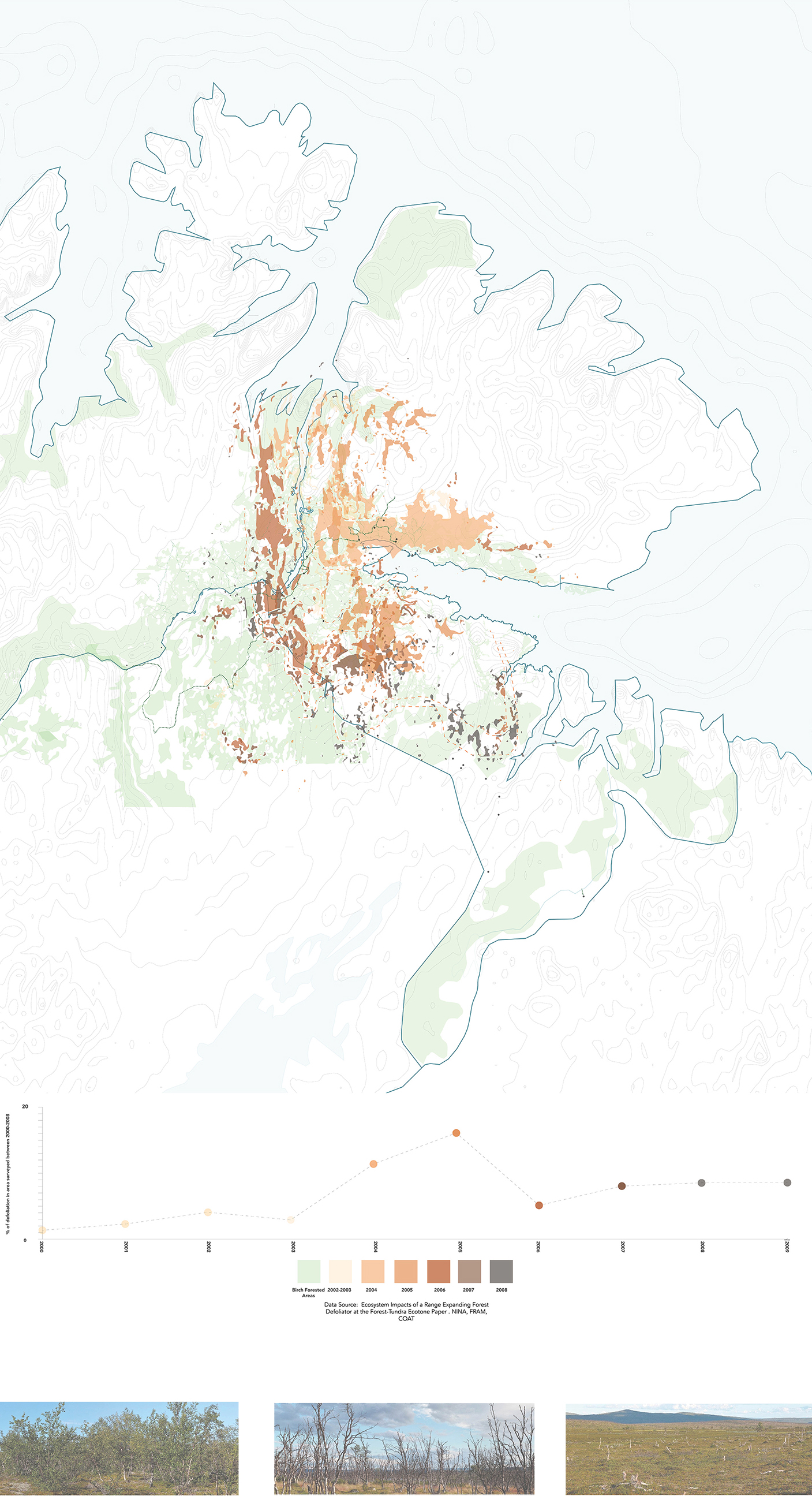
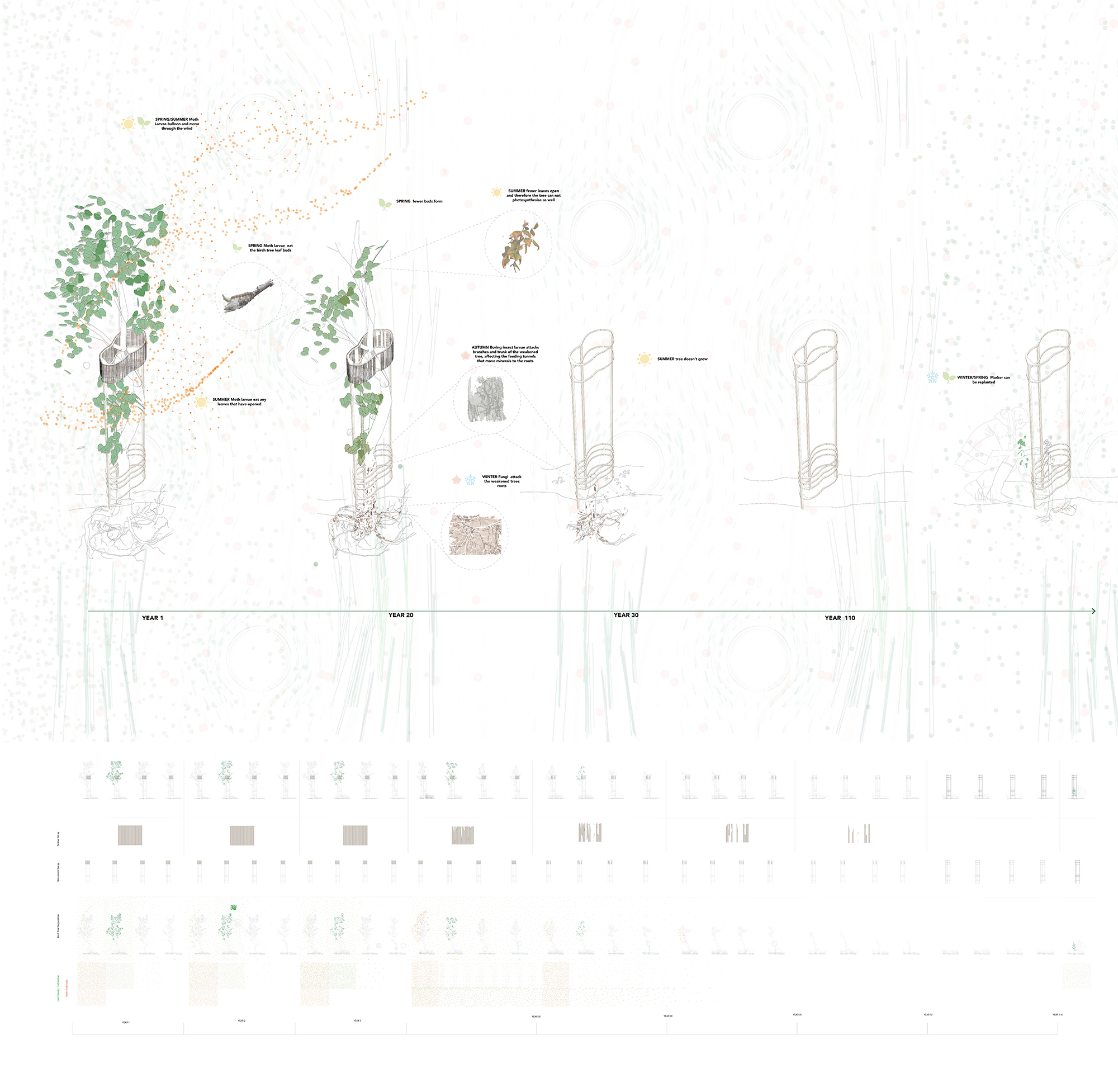

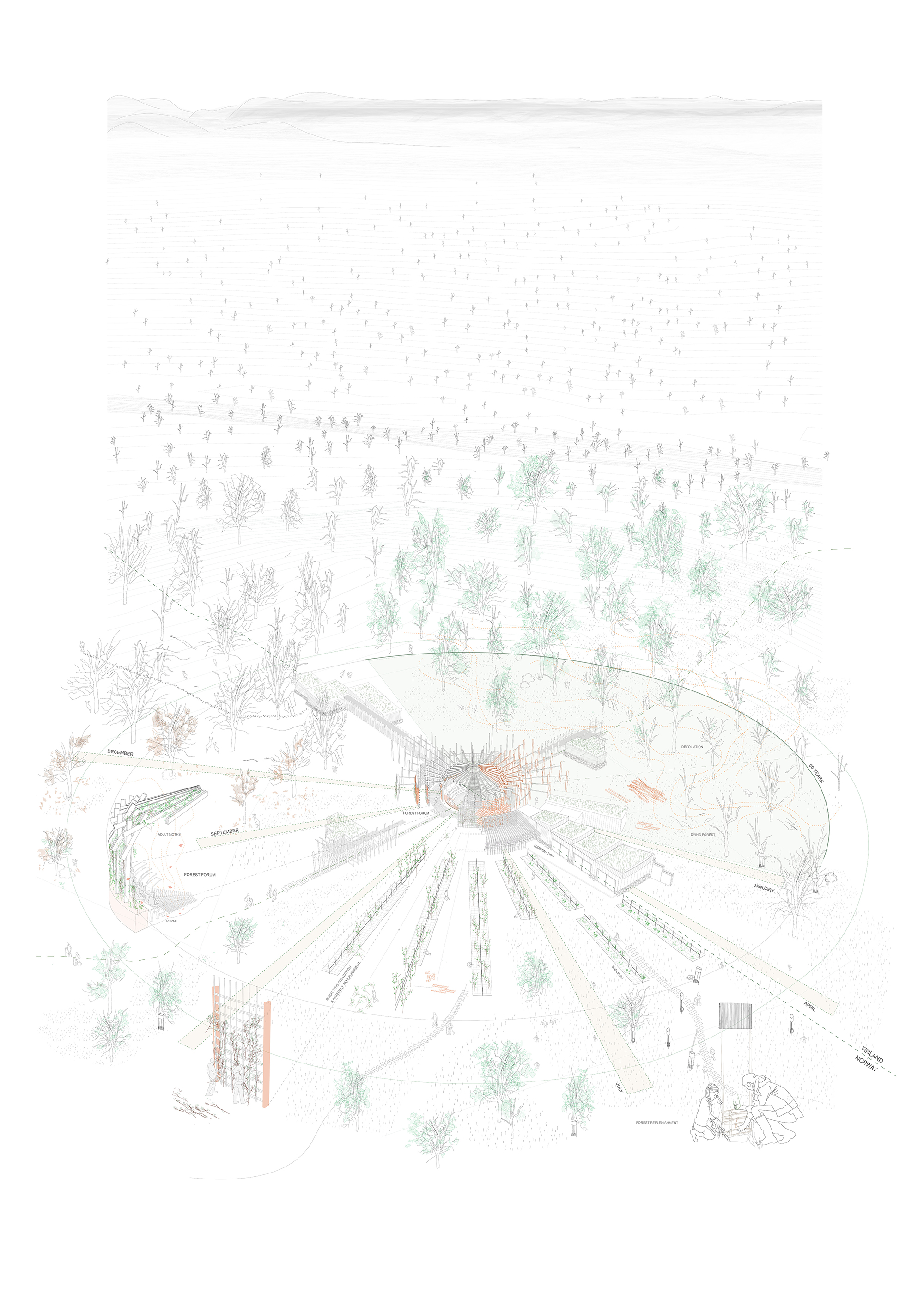
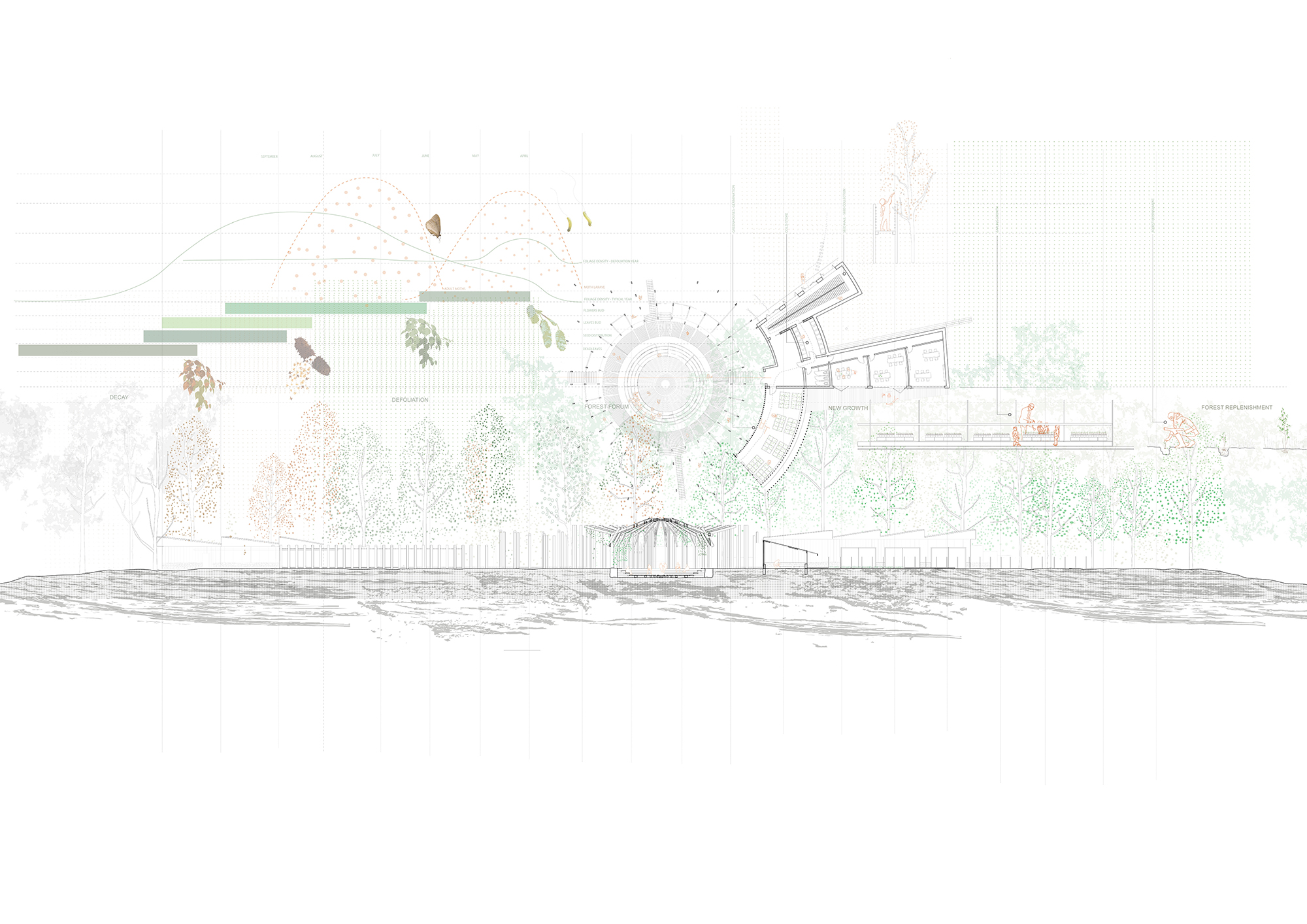
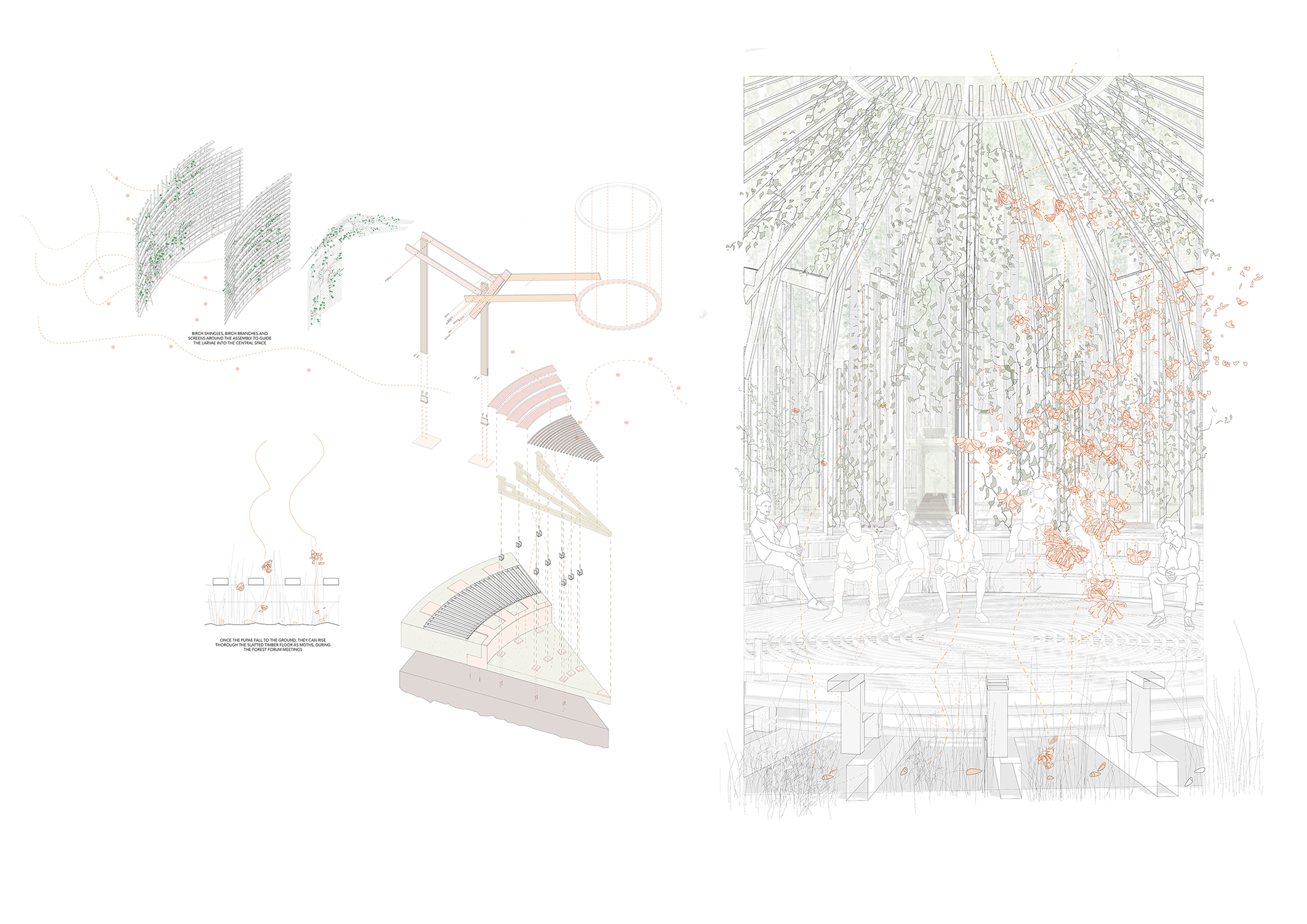
︎︎︎ Home
︎︎︎ Previous // Next ︎︎︎